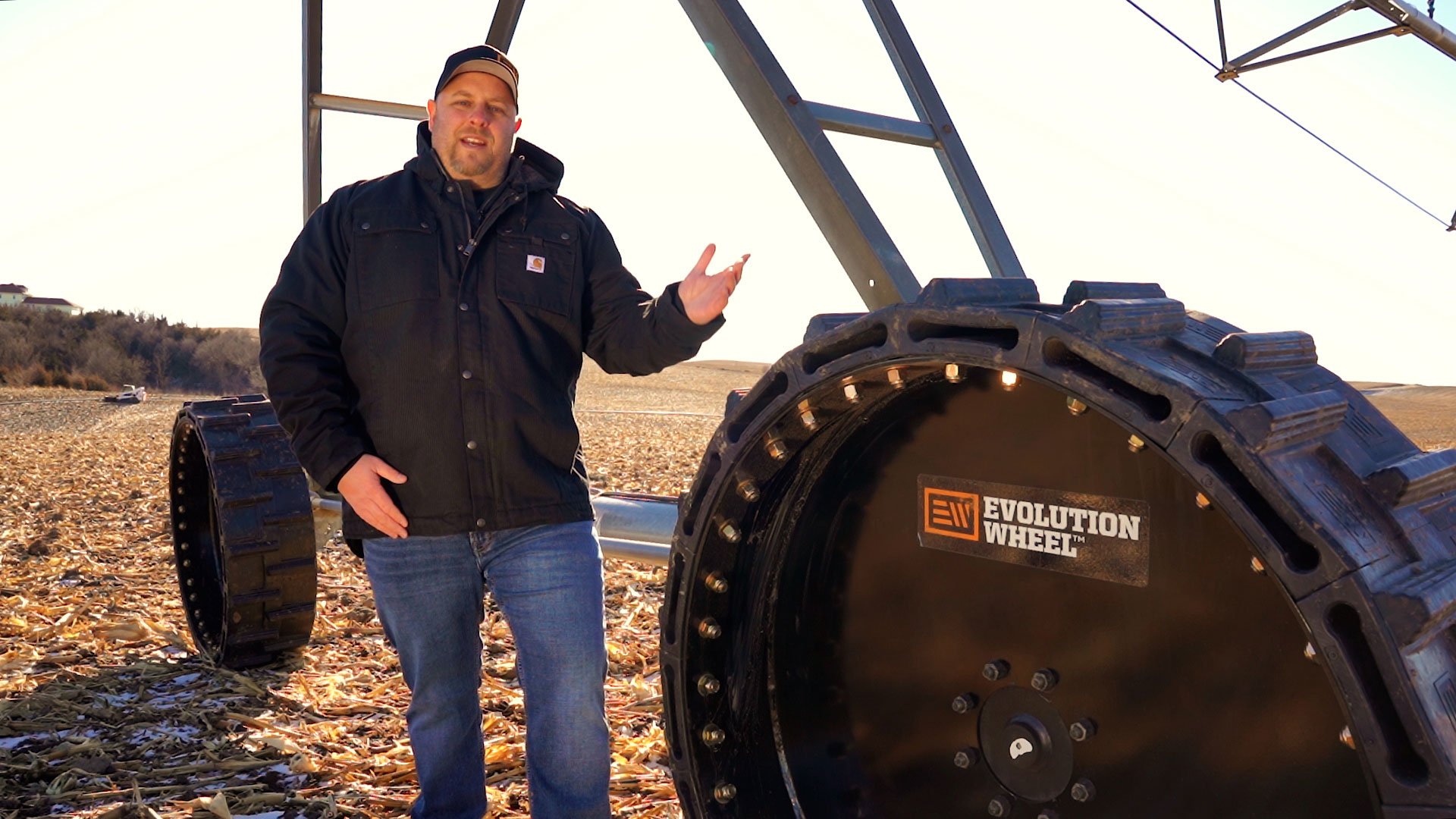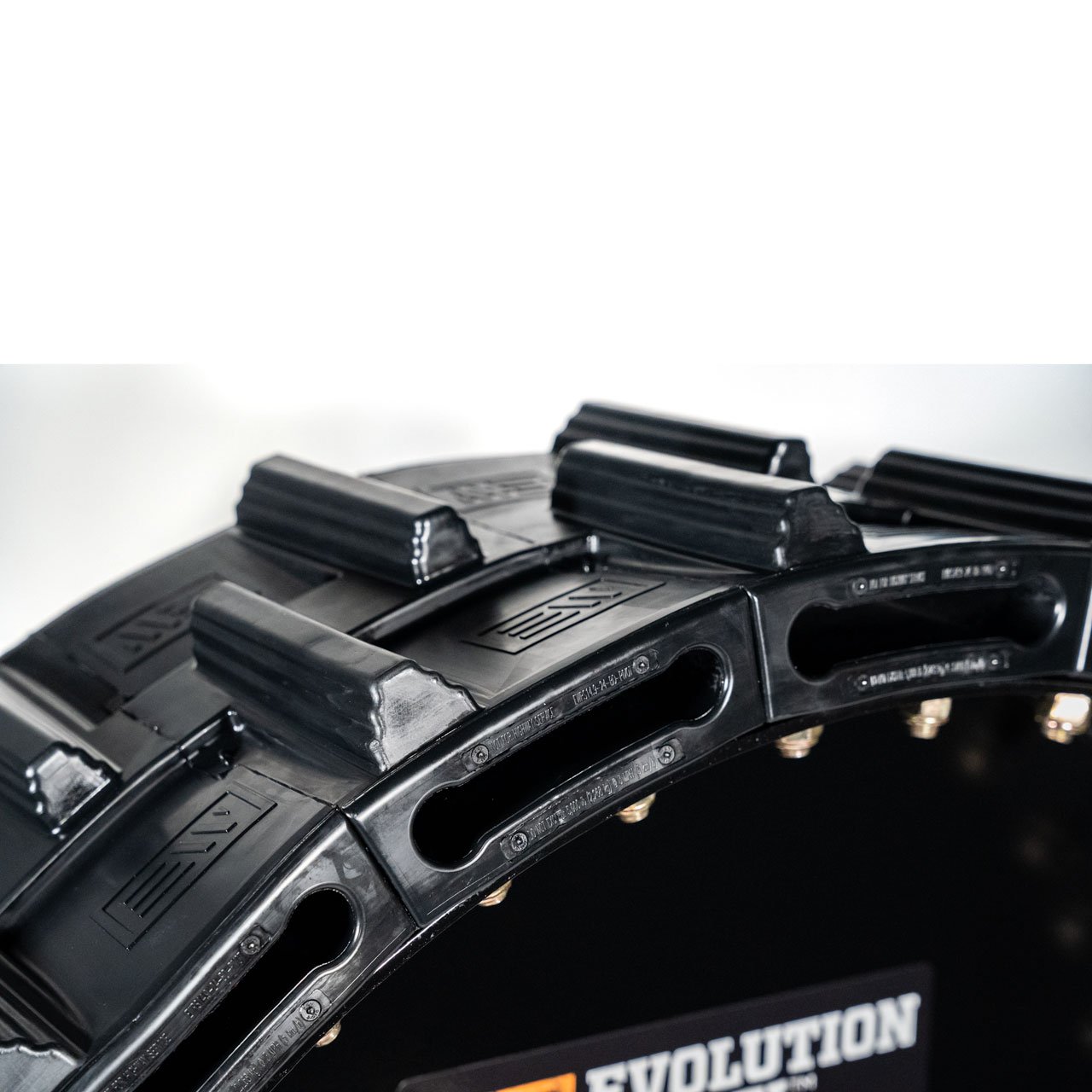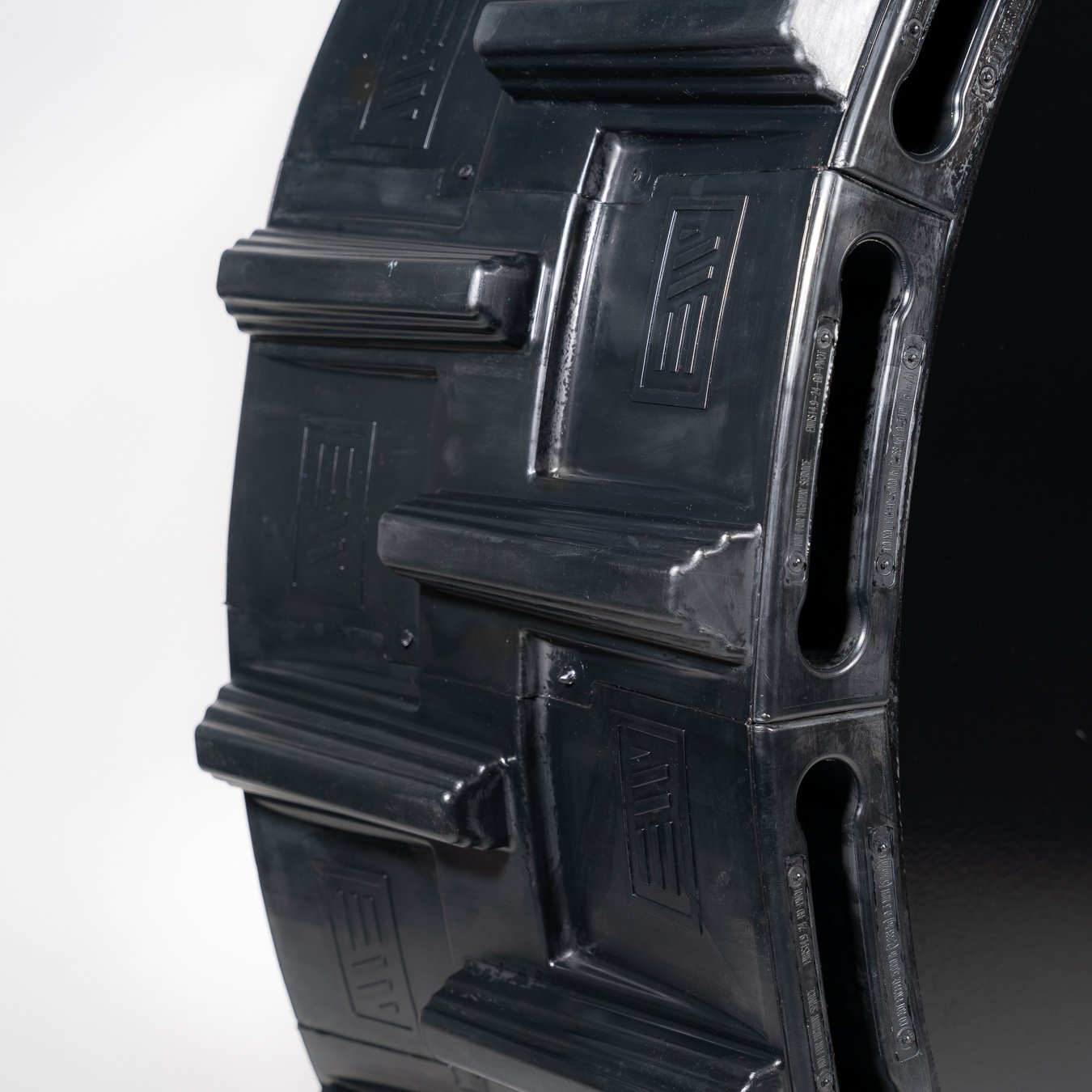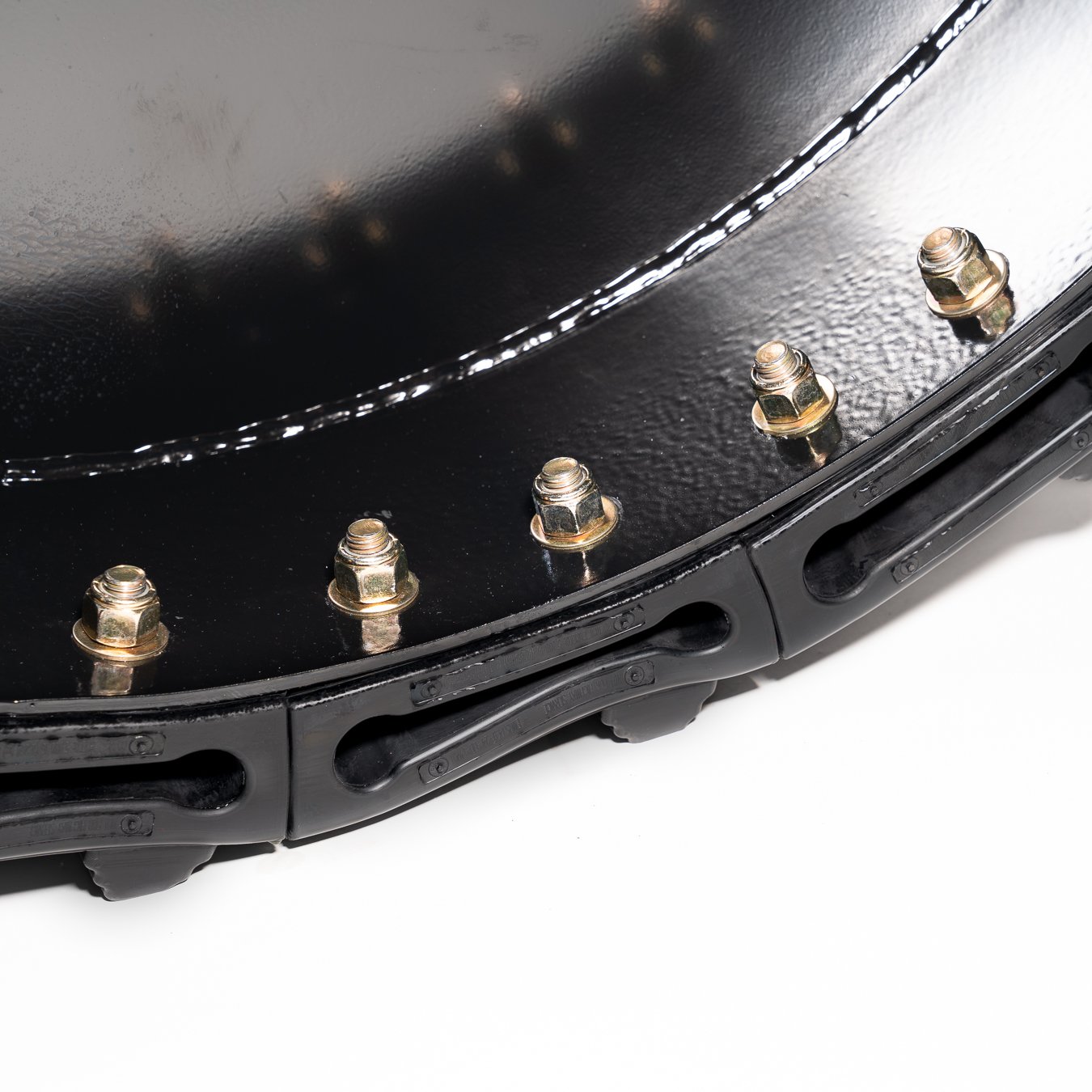The Best Irrigation Tire for Pivot Irrigation
Pneumatic Tires
Pneumatic tires are the industry standard. The great thing about pneumatics is that they compress under pressure which helps with traction. They are easy on driving components and if they don’t go flat, they work amazingly. The problem with pneumatic tires is they do go flat. A flat tire out if the field can damage your irrigation system and costs money to replace.
Airless Pivot Tires
A common solution for flat pivot tires is using airless tires. Airless tires do not use compressed air, eliminating the possibility of flats in the field. There are many different materials airless tires are made of including steel, hollow plastic, polyethylene, and solid rubber. The largest issue with no flat tires is that they are very hard on your gearbox and driving components due to how stiff they are.
How the EWRS-PIVOT is Different
The EWRS-PIVOT tackles the problems of pneumatic pivot tires and other airless pivot tires. Being an airless tire, The EWRS-PIVOT will never go flat and uses what we call core holes to allow the tire to compress like a pneumatic. This gives it more traction and is easier on the driving components than other airless pivot wheels. Since the core holes are designed to compress completely flat, they push the material out, making them a self-cleaning tire. You will never have to worry about added weight to the system when using an EWRS-PIVOT.
The EWRS-PIVOT Series
The EWRS-PIVOT airless center pivot irrigation tire solves all these issues. It is engineered specifically to mimic a pneumatic irrigation tires compression, a wide true-to-spec 14.9” x 24” profile to increase traction and a concave profile that increases floatation while preventing rutting.
The EWRS-PIVOT has a unique core hole geometry that compresses completely when pressure is applied. This allows the tire to compress like a pneumatic mimicking its traction as well as being self-cleaning, so you don’t have to worry about added weight to the system.
The concaved true to spec 14.9” X 24” profile keeps mud underneath the tire, spreads the weight over an increased surface area, and the aggressive tire tread pattern increases overall floatation and traction.
The EWRS-PIVOT’s high-quality rubber has UV protection, and the rims are made with high-strength steel that will last a lifetime. It is also a segmented tire. Each segment is attached to the rim with ¾” nuts. This allows you to service the tire and easily replace a segment when it’s damaged. The rubber on our tires will last 2-3 times the life span of your traditional pneumatic tire, without the risk of going flat.
The EWRS-PIVOT airless field sprinkler irrigation tire is engineered to solve the problems that farmers face when it comes to field sprinklers while not creating new ones. The unique design is a cost-effective problem-solving solution allowing you to trust your irrigation tires not to fail on you.
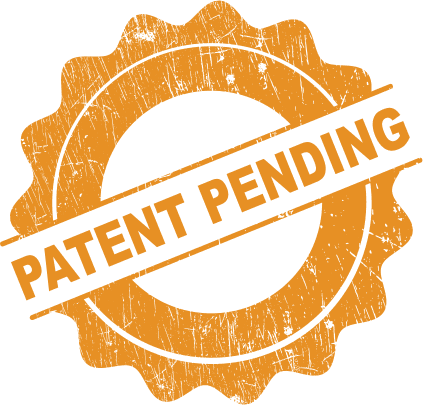
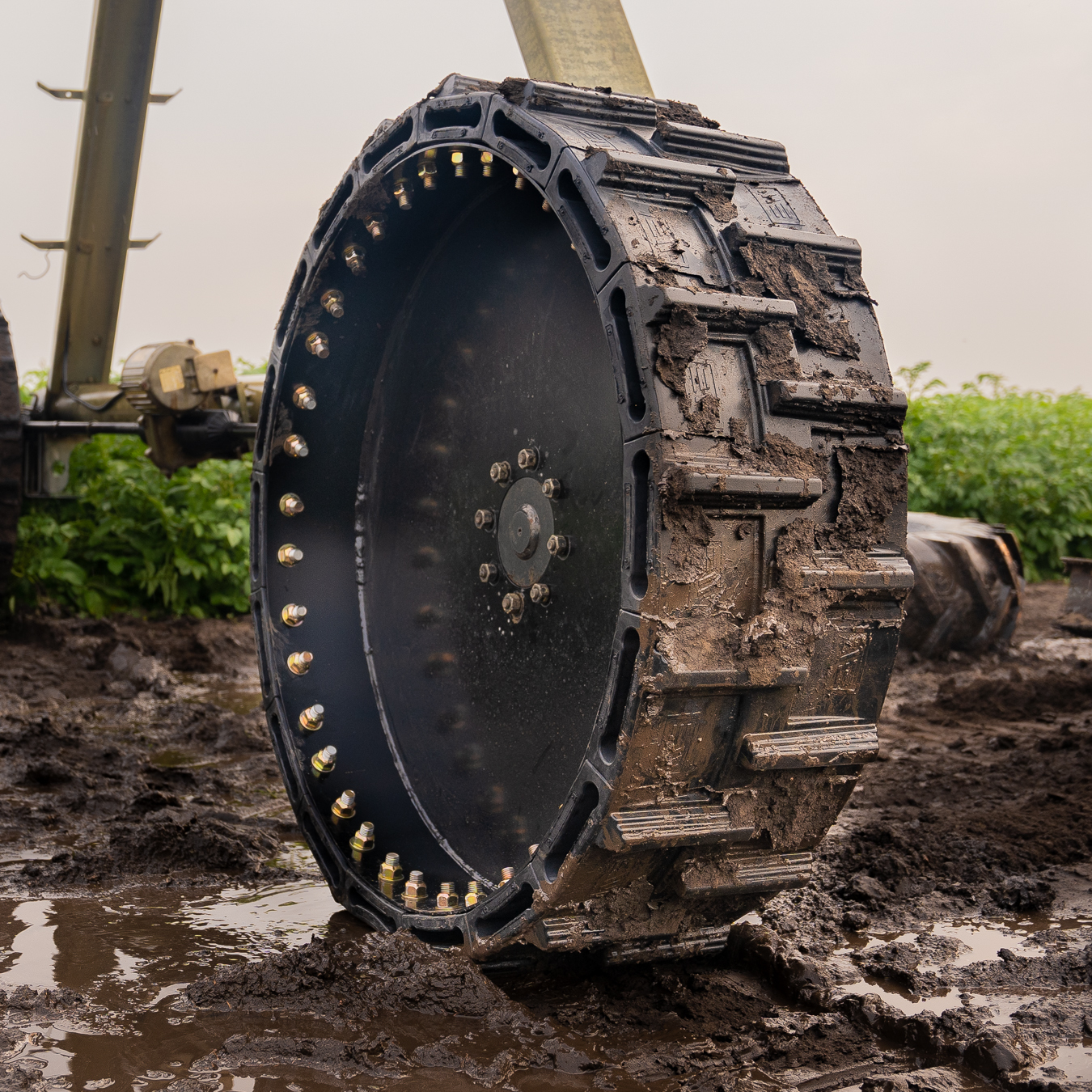
EWRS-PIVOT SERIES
The EWRS-PIVOT series of airless pivot tires from Evolution Wheel offers the most advanced airless technology to the irrigation market. This solution delivers serviceability, traction, and floatation into one impressive offering.
Our tread design and tire profile offer greater traction through mud and obstacles. The unique concave contact face helps eliminate rutting by keeping dirt under the tire, where it belongs. The face of the tire is pointed inwards. Compared to typical pneumatic irrigation tires which convex shape push mud out from under the tire, causing ruts.
Our proprietary segmented design bolts onto our high strength wheel, allowing you the ability to service the tire quickly, eliminating the need to change a tire in the field.
Unlike other airless pivot tires, the EWRS-PIVOT compresses flat pushing material out, it's a self-cleaning system. The compressed cores elongate the footprint of the tire allowing it to wrap over obstacles increasing traction and reducing ground pressure.

Related Pages
If this page was informative, check these out:


